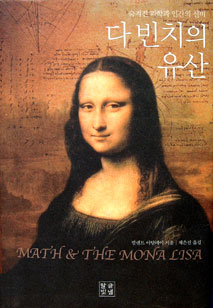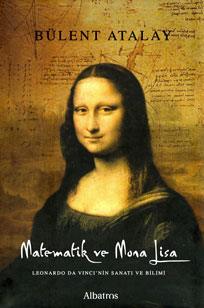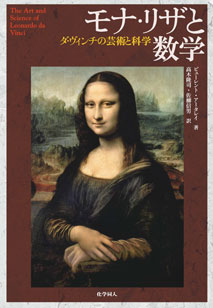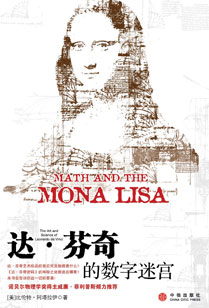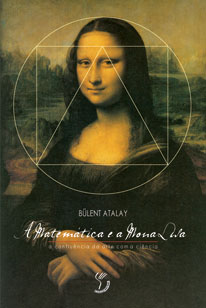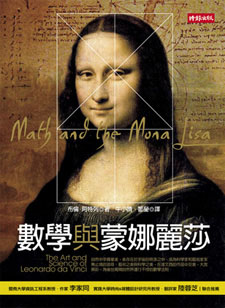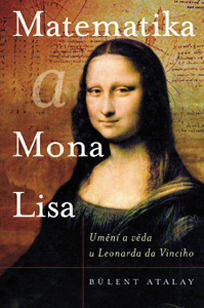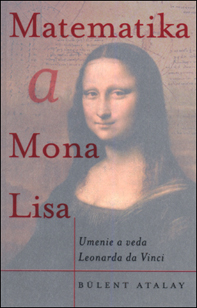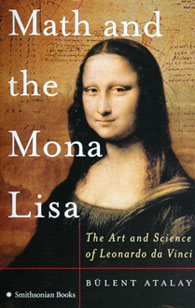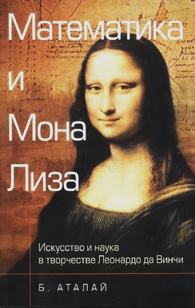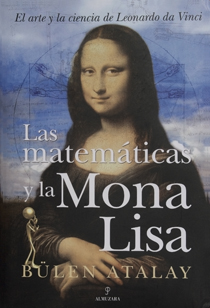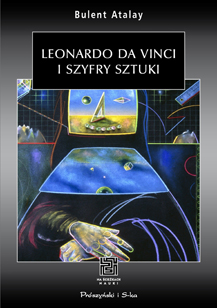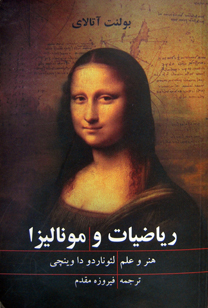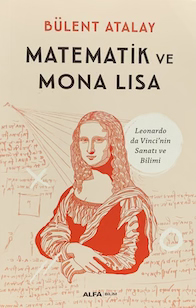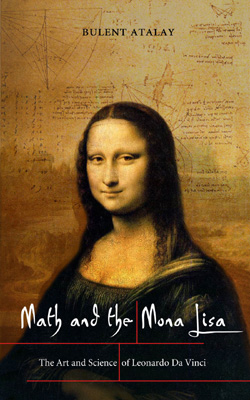 MATH AND THE MONA LISA
MATH AND THE MONA LISA
The Art and Science of Leonardo da Vinci
by
![]() SMITHSONIAN BOOKS
SMITHSONIAN BOOKS
Bülent Atalay’s Math and the Mona Lisa, released on Leonardo's birthday on April 15, 2004, is a book by a modern Renaissance man about the paragon Renaissance man. In a masterfully crafted approach, the author seeks the consilience of science and art—painting, architecture, sculpture, music, mathematics, physics, biology, astronomy, and engineering—by employing 'Leonardo's model,' a scheme he identifies as the modus operandi of Leonardo.
Leonardo, the father figure of the Italian Renaissance, produced no more than twenty paintings, only a dozen or so which have survived. This part-time artist, however, produced the two most famous paintings in all of history. The Last Supper was described by the legendary Oxford art historian, Kenneth Clark, as the "keystone of Western art," and recently inspired the compelling best seller, The Da Vinci Code. And an unremarkable woman, the wife of a Florentine merchant, was immortalized as the Mona Lisa, now the crown jewel of the greatest art gallery in the world. Her enigmatic smile in the psychological portrait has inspired endless curious theories: "She is pregnant," "She is suffering from a tooth ache," "It's a self-portrait [of its creator],…"For Leonardo his varied interests were knots of a magnificent tapestry. Uncovering the internal dynamics of each of these interests and establishing the connections between them were his quest, and systematic experimentation his method. Ultimately, in every aspect of his life—while doing science and engineering, or on the infrequent occasions while creating art—he was operating as the consummate scientist. And it was the cross-fertilization of ideas and their seamless integration that led to many of his astonishing achievements. The transcendent unity of science and art and the expansive cross-semination are the essence of Leonardo’s model.
The author presents science through art, and art through science, and approaches the larger goal of achieving a synthesis of the two fields. The qualities of timelessness and universality in Leonardo's miraculous works speak eloquently for themselves. With Leonardo's model providing the unifying thread, however, it becomes possible, first, to glimpse Leonardo's restless intellect, that extraordinary psyche; second, to see whence the ideas for his works of art came; and ultimately to appreciate his art at a different level. What also emerges is a timeless message: Leonardo's model can assist in bridging the cultural divide prevailing in our age of specialization, and it can help make us all more creative.
Preeminent authorities in the sciences and arts have described the book in the following terms:"The broad sweep of Professor Atalay's brilliant mind brings us an approach to understanding the Vincian genius that is so insightful, so original and so well-reasoned that it immediately becomes an essential volume in the canon of Leonardiana. I read this monumental achievement in awe of the author's perceptions."
—Sherwin B. Nuland, Professor Emeritus of Surgery, Yale University School of
Medicine; Author of How we Die (Winner of the 1994 National Book Award); Author
of Leonardo da Vinci (2000), Penguin Lives' Series.
"A masterful examination of the differences and similarities in the sciences and the arts, as embodied by that genius of both fields: Leonardo da Vinci. Professor Bulent Atalay has penetrated Leonardo's mind, in a way that is both highly readable and very informative."
—Jamie Wyeth (the youngest member of the three-generation family of
distinguished American artists).
"Bulent Atalay takes us on a delightful romp through millennia and across continents, bringing together art, architecture, science and mathematics under the umbrella of Leonardo's genius. His writing is informed by his artist's eye for beauty, his historian's appreciation of context and his scientist's love of order and symmetry. I read Atalay's description of Leonardo's 'The Last Supper' not long after having visited the masterpiece in Milan, for the first time since its restoration. His words added an unexpected poignancy to that sublime experience. Leonardo is the prototype for the renaissance man-artist, architect, philosopher, scientist, writer. There are few like him today, but Atalay is indeed a modern renaissance man, and he invites us to tap the power of synthesis that is Leonardo's model."
—William D. Phillips, the 1997 Nobel Prize Winner in Physics.
_______________________________________________________
12 Languages
DOMESTIC EDITIONS — Hardback edition released April 15, 2004, Smithsonian Books (Seven printings)
Paperback edition released March 2006, Smithsonian-HarperCollins (Four printings)
FOREIGN LANGUAGE EDITIONS — already released: Korean • Turkish (four printings)
• Japanese (two printings) • Simplified Chinese (Beijing) released January 2007
• Portuguese (San Paulo, Brazil) • Complex Chinese (Taiwan) • Russian (Moscow)
• Czech (Bratislava) • Slovak (Bratislava)• Spanish (Cordova) • Polish (Warsaw)
Words and Book Publishing — Seoul
Smithsonian-HarperCollins
TECHNOSPHERA —Moscow
PROSZYNSKI — Warsaw
Order your copy:
Contact Information : drbatalay@gmail.com • Telephones: (540) 898-0355 and (540) 845-4962 • Wikipedia Entry• YouTube
